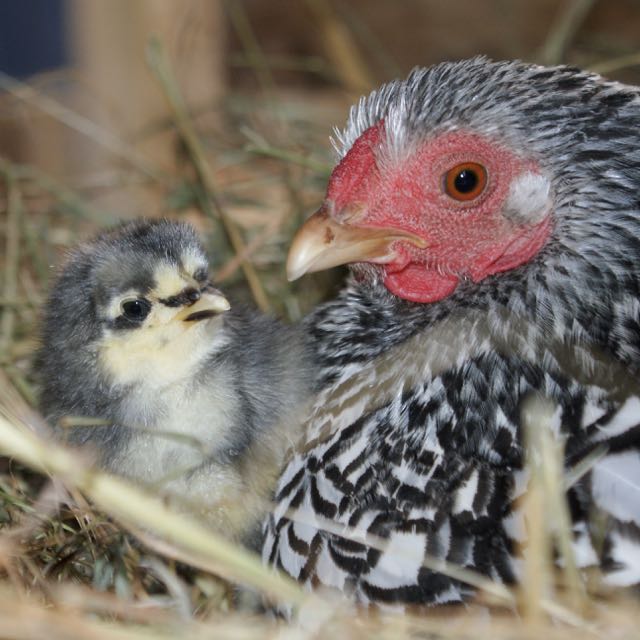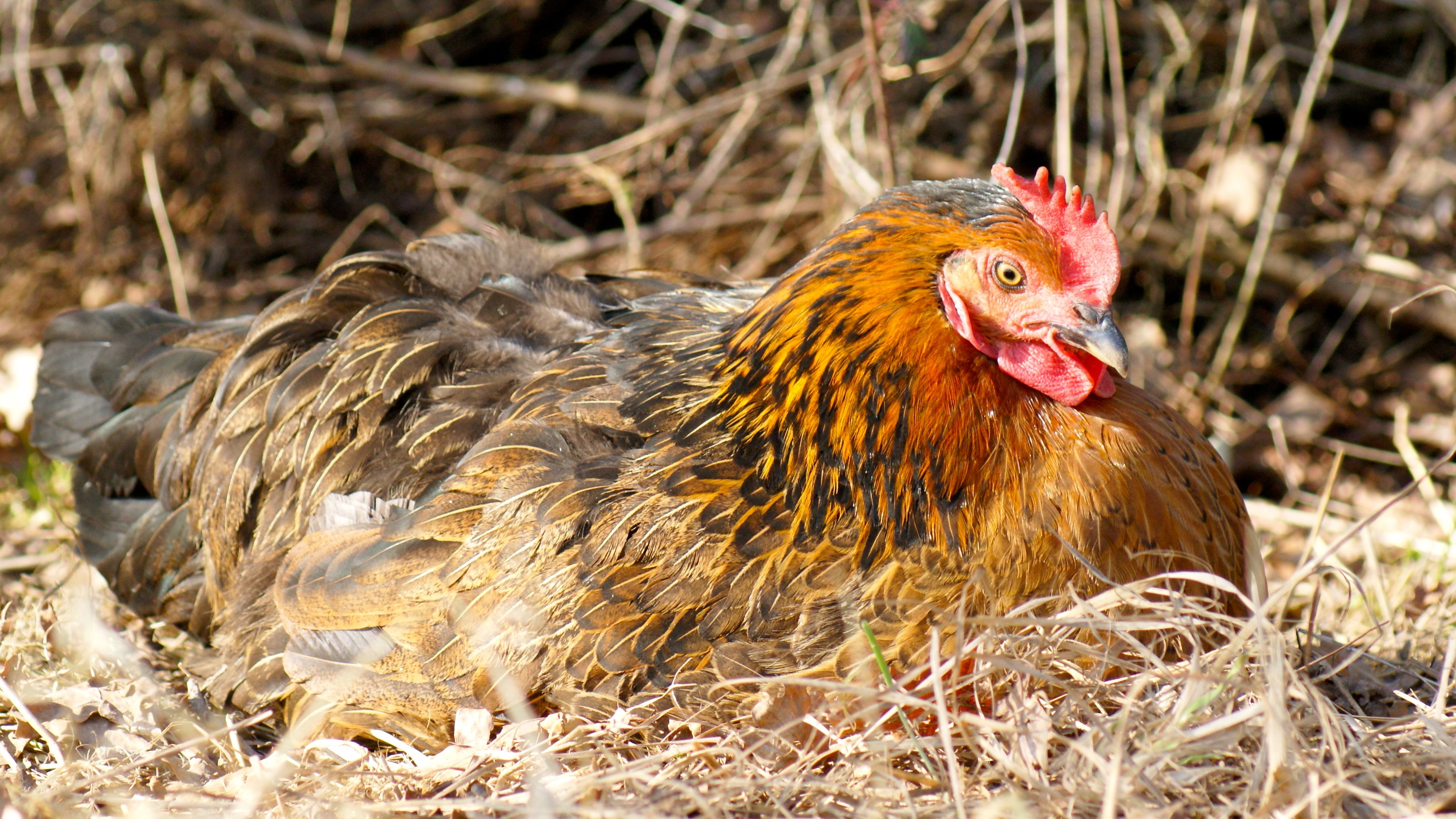The gallinaceous metabolism follows a particular cycle, linked directly to nature’s seasons. if you respect this cycle you will have strong and resistant baby chicks.
As soon as February comes, the days get longer and the chickens capture more ultra violet rays (UVB). This changes their metabolism :
- The hen will produce good quality vitellus* (yolk)
- The rooster will produce excellent quality sperm

Newly hatched chick
When March arrives, the annual egg-laying period starts, followed by the brooding period (21 days) and ended by the hatching process.
May is the best month for hatching chicks. After benefiting form the best antibodies their parents could give them, they will thrive thanks to rich protein sources like young grass shoots and animal proteins like insects, worms, larvae…
Their body will continue to develop itself during summer and fall.
By the end of October to beginning of November they will start stocking up fat to go through winter in good conditions, they don’t moult the first year.
These youngsters will start to breed in February the next year. They will maintain this natural cycle that ensures to have the best, healthy animals.
*Vitellus : It’s the egg’s yolk containing all the nutritious elements.
2


